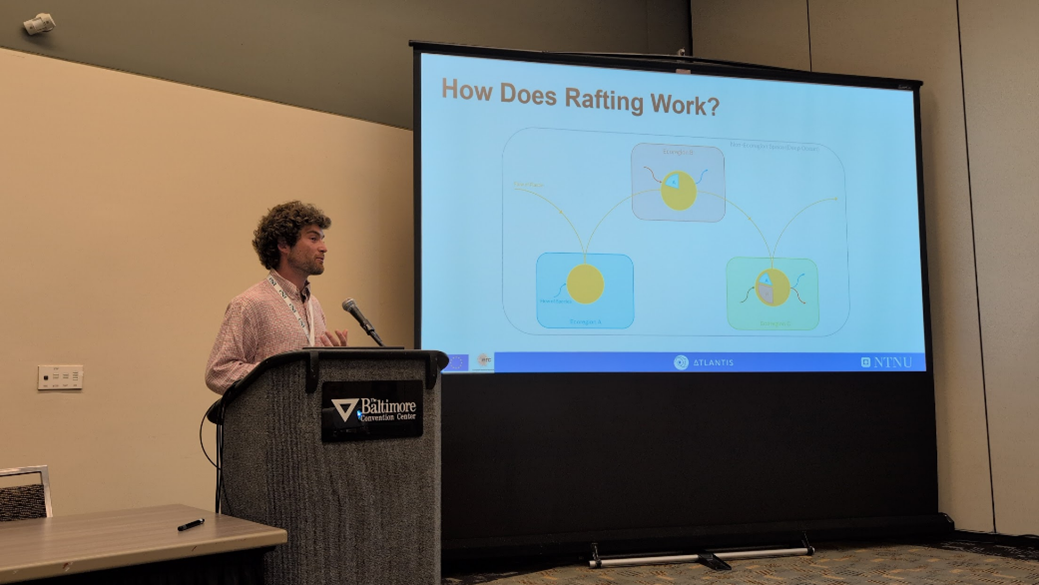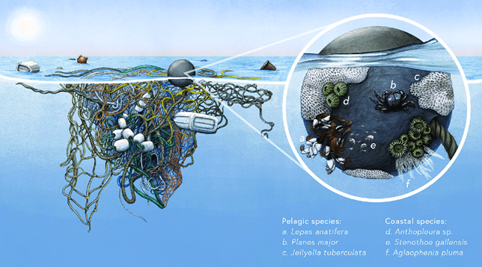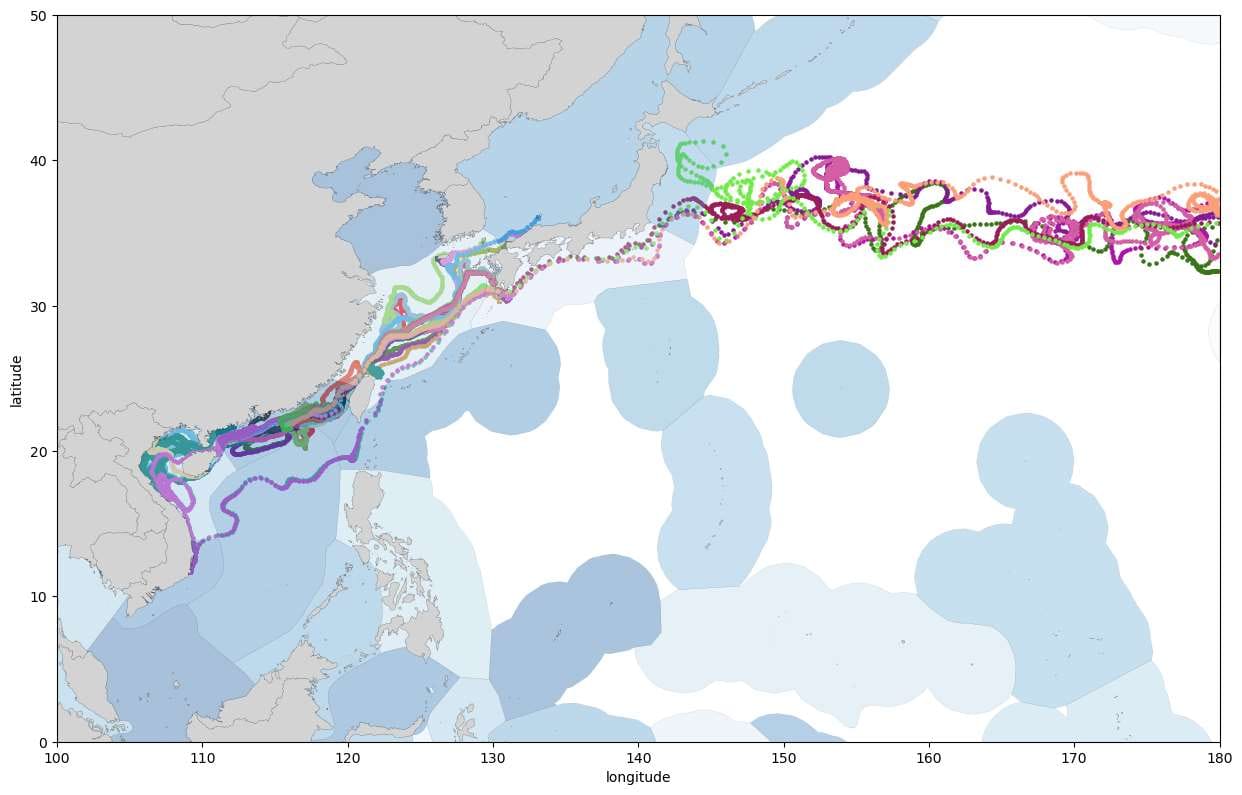ESA 2025: IndEcol Presents State-of-the-Art Invasive Species Model
We know of many environmental impacts of ocean plastic, from entanglement with marine life to microplastic pollution of food webs. But did you know that ocean plastic can help contribute to the spread of invasive species as well? Former MSc student Elisha Wilson has been working closely with ATLANTIS PhD candidate Philip Gjedde to develop a model for the impacts of marine invasive species spread through “rafting” on ocean plastic. Elisha presented the results of this model at the Ecological Society of America’s annual conference in Baltimore, Maryland in August.

Very little is known about ocean plastic’s contribution to the spread of invasive species. Floating natural debris items, such as driftwood or pumice, have always served as a means of transportation for marine life. The difference is, these items sink or degrade after a relatively short period of time, whereas plastic debris items may remain floating on the surface for years or even decades. An increasing number of studies show that these rafting communities can survive for very long periods of time in the open ocean, and that repeated introductions of these communities to new ecosystems almost certainly contribute to new, permanent establishments of rafting species there. What we don’t know is how often this occurs, the chances that new establishments will occur, and where the impacts are most likely to happen. This is where our model aims to shed some light!

Our work builds on other exciting research projects happening in ATLANTIS, most importantly the ocean plastic fate model developed by Marte et al. (link) and the MarInvaders database developed by Philip and his collaborators (link). The plastic fates, or trajectories of plastic debris items through the ocean, serve as the fundamental unit of the model. For each plastic item, we model how the community develops over time. This includes colonization rates, local die-off rates, and of course, dispersal rates of the “rafting” species in new ecosystems. When we do this for hundreds of possible plastic fates at the same time, we begin to understand how these floating plastic debris items may pick up and drop off alien species in any given coastal ecosystem worldwide.

The presentation at ESA 2025 generated a lot of excitement! Invasive species impacts are mostly invisible, especially in the marine realm, so contributing to public awareness around this issue is an important step towards mitigating them. Keep your eyes out for our upcoming publication!
